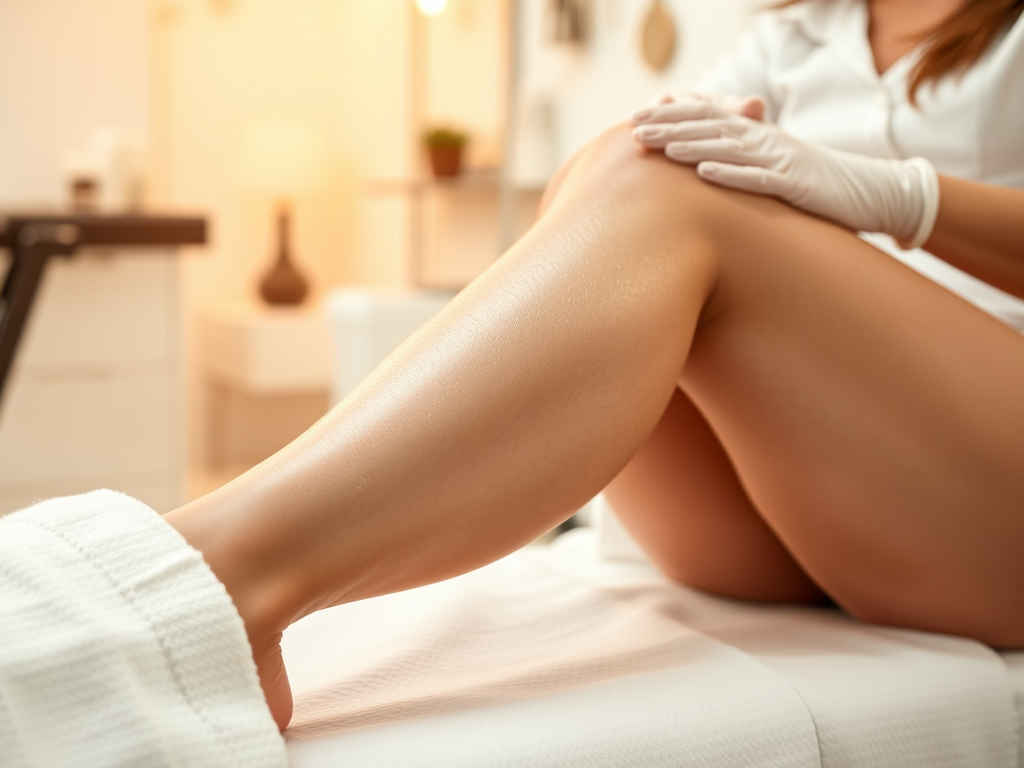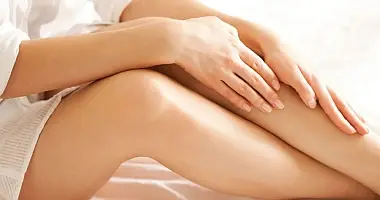
Wax Hair Removal
Waxing removes hair by applying a special wax to the skin. The wax grips the hair. It is then quickly pulled out from the root.
It’s much more effective than shaving, providing smoother skin for weeks rather than just days.
There are a few types of wax to know about:
Soft wax: Used with strips, ideal for larger areas such as legs and arms.
Hard wax: Sets on its own, ideal for delicate zones like underarms or the bikini line.
You might also hear about:
Strip waxing: A method using cloth strips to pull hair off.
Hot waxing: A gentler method using thick, hard wax no strips needed.
There are a lot of good reasons to switch to waxing:
Smooth skin for 3–6 weeks without needing daily maintenance.
Finer, softer hair regrowth over time.
Perfect for larger areas like the back, arms, and legs.
Waxing can help you maintain soft, healthy-looking skin and cut down on the time you spend grooming every week.

Types of Waxing Techniques
Not all waxing methods are the same. Here’s a quick guide to help you choose the best one:
Soft Wax: Best for quickly covering large areas, like legs or backs.
Hard Wax: Stays to the hair (not the skin), making it gentler for sensitive spots.
Brazilian Wax: Removes most or all hair from the bikini area for a super-smooth finish.
Arm and Leg Waxing: Popular choices for smooth, hair-free skin year-round.
How to Prepare for Your Waxing Appointment
Good preparation leads to better results. Before your waxing session:
Avoid shaving for at least two to three weeks.
Exfoliate gently to remove dead skin and lift trapped hairs.
Stay hydrated and moisturize the days before (but skip lotion on waxing day).
This simple prep routine will help your wax adhere better and make your session smoother and less painful.
What Happens During a Waxing Session?
Your specialist will cleanse the area first.
Warm wax is applied, either soft or hard, depending on the area.
Hair is removed quickly in sections.
A soothing lotion is applied afterward to calm the skin.
The process might involve a little discomfort. It’s usually very quick. Many people find that the results are worth it.

Aftercare Tips for Smooth, Healthy Skin
Post-wax care is important to keep your skin looking and feeling great. After your session:
Avoid hot showers, tight clothes, and sun exposure for at least 24–48 hours.
Use soothing creams like aloe vera to calm redness.
Softly exfoliate after a few days to prevent ingrown hairs.
Taking care of your skin after waxing will allow you to avoid irritation and enjoy longer-lasting results.
Common Side Effects and How to Prevent Them
Waxing is generally safe, but mild side effects can happen:
Redness or slight irritation
Ingrown hairs occur if the skin isn’t exfoliated properly
To avoid these problems:
Follow the aftercare steps carefully.
Keep the area moisturized.
Avoid picking or scratching after waxing
Facials
Types of facials, Benefits, How often to get a facial. What facial is best for your skin concern. and the takeaway.
If you’ve ever felt overwhelmed and/or confused by the sheer number of skin treatments (been there), allow us to help you wade the waters. See, facials are an investment—of both time and money. So before booking just any treatment, it’s important to know which option is best for your skin type and concern.
All facials will follow a similar form—steam, exfoliate, extract, massage, hydrate, etc.—with some added treatments or tools thrown in, depending on your skin’s individual needs. For example, an esthetician performing an acne facial might spend more time on extractions, whereas a lymphatic facial would involve more massage work. See below for each of the highlights:
Classic facial
Here, we have your standard facial. Every esthetician has their own unique order and products, but here’s the gist:
Skin Analysis: “The esthetician will begin by chatting with you and asking questions to determine the best treatment plan for your skin,” says celebrity esthetician Renée Rouleau.
Cleanse: To create a clean canvas for all treatments to follow.
Exfoliation: “This can take many forms, but a gentle exfoliating acid or enzyme peel, ultrasonic exfoliation, microdermabrasion, or bio-dermabrasion are the most common,” notes Rouleau.
Steam: To increase blood flow and make extractions easier for the esthetician.
Massage: Arguably the best part of the treatment (in my opinion). Techniques and timing may vary, but most estheticians perform some type of facial massage to promote better product absorption, encourage circulation, and sculpt facial muscles.
Manual Extractions: If you have congested skin, an esthetician may perform extractions to clear clogged pores. The order varies: “Unlike most estheticians, I always perform extractions after the massage,” notes Rouleau, but typically it comes after steam and exfoliation.
Mask: Options vary depending on your skin’s needs (hydrating, pore refining, etc.).
Hydrafacial
A hydrafacial combines exfoliation and hydration by using a microdermabrasion-like device that simultaneously sucks all the gunk out of pores and infuses them with nutrient-rich serum “boosters” to rejuvenate the skin.
Hydrafacials are noninvasive, and they’re gentle enough for most sensitive and acne-prone skin types to handle. Although, “it’s best not to use on any active, open acne,” says board-certified dermatologist Ava Shamban, M.D., founder of SKINFIVE. “This is often best for a patient with very dehydrated, dull, flaking, or otherwise tired, sallow skin that needs a deeper clean and overall replenishing refresh,” she adds.
Firming or sculpting facial
Also called a “workout facial,” this treatment is meant to sculpt and tighten the skin. Again, many professionals will add a few minutes of facial massage to lift and tone the muscles, but a firming facial will typically involve more time with tools and perhaps devices. “Think about it as an added bonus by going to the gym for your face,” says Nina Carla, medical esthetician at Motykie Med Spa. (Hence, workout facial). “[It] lifts, sculpts, and firms the skin to help prevent sagging, using tools and devices with current and energy as well as by hand.”
For example, this type of facial might involve a microcurrent device or vibration therapy tool (like Darden’s famous sculpting wand). “I have microcurrent gloves that I’m obsessed with and use in all of my facials,” Darden adds. “They allow for a more evenly dispersed, deeper treatment. You can literally scoop up the cheek muscles for more lifted and sculpted cheekbones!”
Lymphatic facial
You can read all about lymphatic massages here (including how to perform your own at home), but generally, this centuries-old technique helps aid the body’s natural detox process. “This unique massage technique stimulates lymph flow and enhances the clearance of accumulated waste in the body,”.
And because you have a high concentration of lymph nodes in your face and neck, specific movements can help encourage flow—an esthetician or licensed acupuncturist might use their hands, a gua sha stone, or facial cupping tools (although, professional facial cupping treatments will likely follow an acupuncture session).
“Unlike the circulatory system, your lymphatic system doesn’t have its own pump. That’s where lymphatic massage comes in,” adds Rouleau. “For the skin, conditions like puffiness, acne, dryness, dullness, and even skin sensitivity can be improved and even resolved by simple lymphatic stimulation, because it helps the body do what it’s meant to do: heal.”
Acne facial
Also called a “decongesting facial” or “deep cleaning” facial, this treatment will often include extractions and a high-frequency device to kill acne-causing bacteria on contact. “The former removes clogged pores, and the latter targets active blemishes,” says Rouleau
Of course, treating acne takes balance—you don’t want to simply overwhelm the skin with peels and extractions. “The goal is to remove the excess surface sebum, dead skin cells, and buildup in pores while eliminating bacteria without inducing a sebum response,” says Shamban. So the esthetician might throw some hydration into the mix, like a cooling mask to soothe inflammation.
Benefits of facials.
Think of how you might treat your overall health: You’ll have annual checkups with a physician to address any concerns, but you might enlist the help of a dietitian and/or personal trainer to meet specific nutrition and fitness goals. With skin care, you can see a dermatologist for regular check-ins, but you might also see an esthetician to help manage the upkeep.
And estheticians manage that upkeep in a very meaningful way: Appointments are usually an hour or more, so the expert can really spend time with your skin and address any concerns or goals you have. “Not only do [facials] clean out the pores and balance the skin, but your esthetician will also talk to you about how to care for your skin at home and what foods to avoid if you are having acne,” says Rouleau. Plus, they treat a vast range of skin types every single day, so estheticians have a repertoire of knowledge that can help you along your skin care journey. “Getting professional skin care advice early will give you good habits for a lifetime,” Rouleau adds.
